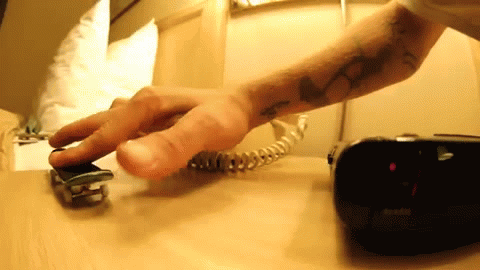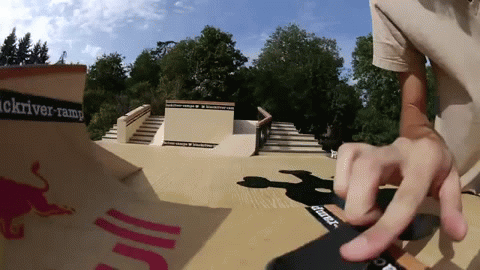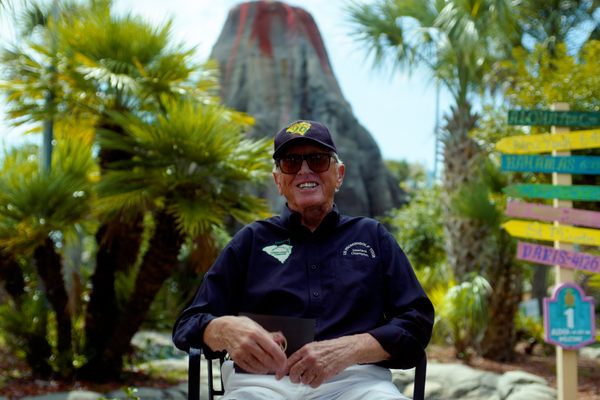Tiny Skateboards and the Fast Fingers that Ride Them
 A fingerboarder shredding a finger-sized skatepark. (Photo: Mathias Genterczewsky/Flickr)
A fingerboarder shredding a finger-sized skatepark. (Photo: Mathias Genterczewsky/Flickr)
Fingerboarding: It’s so much more than just using your hands to play with a diminutive skateboard.
Although, technically, that is its definition.
Fingerboards arrived in the 1980s, when skate shops began selling them as novelty keychains and hobbyists constructed their own tiny boards at home. Textbooks, rulers and writing utensils became fodder for elaborate miniature skateparks. Sliding tiny boards over school desks, or along the walls of a bedroom on rainy days, was a way for skateboarders to keep practicing tricks when weather or circumstances prevented them from jumping onto a full-sized board and hitting the half-pipe.
Over the last ten or so years, fingerboarding has developed from a do-it-yourself hobby to a full-on industry. The best fingerboarders—mostly guys in their late teens and early twenties—even have full brand sponsorships. They receive free gear and are flown around the world to events and meet-ups as fingerboarding ambassadors.
The competition scene is huge, with events in locales as diverse as the Czech Republic and Mexico City. The crown jewel in the fingerboarding world is the Fast Fingers tournament in Germany, where 64 invited riders compete for a $1,500 cash prize.
In the 1990s, as the classroom variety of fingerboarding became more popular, companies like Tech Deck improved upon the original keychain fingerboards, designing mass-produced, purpose-built platforms for tricks. With better boards, the discipline of fingerboarding evolved. Now people could perform standard skateboard tricks, like ollies, shove-its, and kickflips, on mini-boards anywhere they wanted.
There are myriad companies involved with the fingerboard ecosystem at all levels of the supply chain. Start-up companies provide the “decks” (the wooden platform for the board) while other companies build the wheels, trucks, grip tape, and bearings. There are even dedicated ramp manufacturers, which build and ship jumps, rails, and half-pipes to fingerboarders all over the globe.
A whole fingerboarding set easily cost over $100, a steep increase from the few dollars that a novelty keychain once went for.
To get the lowdown on the fingerboarding scene, Atlas Obscura spoke to Mike Schneider, a 22 year-old from Andover, Massachusetts, and the owner of FlatFace Fingerboards—a company that hand-makes fingerboarding decks, wheels, and ramps, and even organizes events. Schneider is something of a celebrity in the online fingerboarding world, and running FlatFace is his full-time job.
Schneider first started fingerboarding the same way most kids do. “I got into fingerboarding in fourth grade,” he says. “I had just started skateboarding and really enjoyed it. I saw a lot of my friends in class playing with tech decks and I absolutely loved it.”
The key was persistence: it took months for Schneider’s mom to finally buy her son a board. “It was definitely the most important toy I ever got because in a chain of events it completely changed my life,” he says
Schneider started FlatFace shortly after getting his first fingerboard. At first, the company was just Schneider himself modifying boards. As his modifications started to become more popular among his friends, he decided to develop the company while still living in his mom’s house.
Discussing the early days of fingerboarding, Schneider says there was no real space for fellow fingerboarders to discuss their passions with each other.
“We would all share videos on YouTube, and mail each other our own handmade items, trading or selling them. Everything was very basic, cheap and handmade—although most still is handmade, but to higher standards now. There were always little companies popping up and disappearing after months or a year or two. Some lasted a bit longer, but most were unsustainable.”
FlatFace aimed to change that, starting the Fingerboard Rendezvous event in the driveway of his mom’s house in Massachusetts. What was once a meet-up of 10 to 15 friends is now a global event attracting 300 to 400 people, held at the combination home and FlatFace office he purchased with revenue from the company.
According to Schneider, a good fingerboarding setup will probably run you “between $30 to $140.... depending on the quality of products you want to go with. Ramps start around $15 or so, the biggest ones can be over $100, and full-sized parks can be around $2,000 but are generally not for sale often.” Certainly not chump change.
But, Schneider stresses, you pay for the same quality that you’d expect out of a skateboard.
“All of our decks are handmade in the U.S.A. I used to make all of them myself, but I needed help to keep up with demand, so they are molded in California and shipped to me for the rest of the process.” Schneider spares no expense in the process: the wood veneers come from U.S. and England, the boards are pressed in a mold that is a miniature version of an actual skateboard mold and a “special kind of glue” ensures durability and waterproofing. “We have precision technology that ensures that every board is perfectly drilled and shaped, and the edges are rounded by hand and sanded smooth,” he says.
 Courtesy of Mike Schneider
Courtesy of Mike Schneider
Beyond developing incredible hand-eye coordination (and equally strong fingers), the benefits of fingerboarding lie in its accessibility.
“Fingerboarding can take you across the world or you can enjoy it in the privacy of your own home,” says Schneider. “It doesn’t matter what country you’re from or even really what language you speak.” In fact, it’s much like the sport that it is based on. “Anyone can do it,” he says, “and many describe it as therapeutic.”

Courtesy of frenchmefrenchyou










Follow us on Twitter to get the latest on the world's hidden wonders.
Like us on Facebook to get the latest on the world's hidden wonders.
Follow us on Twitter Like us on Facebook